Raranga mai ai ki runga
Raranga mai ai ki raro
Raranga mai ai ki roto
Raranga mai ai ki waho
Rarangatia mai te whenua ki te whenua
Rarangatia mai te ewe ki te ūkaipō
Tīkina te rangatahi kia rangatira ai
Taku ohinga, he ohinga tipua, he ohinga taiohi
Tēnā tātou katoa
Ko tō mātou wawata nui ki tēnei kaupapa, kia whai whakaaro nui ai te rangatahi ki tōna taiao, kia rongo ai ngā ringaringa o mātātahi i te wai-o-nuku, i te wai hāware o Tunaroa, kia whai pakiaka ai te waewae o taiohi ki te whenua. Kia tō ai, kia whakatupu ai ki te manawa te aroha ki tō tātou taiao, kia kaua tonu te Māori e noho wehe ana i tōna ao.
He uru kahika ki te wao, he uru tangata ki te pā
Woven from above
Woven from below
Woven from within
Woven from without
Weave the placenta to connect to the land
Weave the foetus to its source of sustenance
Gather the single strands, so they may be woven together
The proliferation is that of the supernatural, the proliferation is that of youth

Our aims for this programme were to give you an opportunity to carefully consider the importance of the environment, to spend time in the environment to feel further connected to it. We hoped to spread some love for our environment so that we as Māori do not continue to live apart from it.
As the roots of the kahika weave together in order for it to stand, so should we in our support of each other.
The Te Pūtahitanga Symposium is an annual event that draws together communities, organisations, and families who have been working towards healthier lifestyles, for a brighter futures for their whānau and for their communities.
He Waka Kōtuia was approached in March 2020 to facilitate a rangatahi programme for Te Pūtahitanga to run concurrently with their main symposium. As organisation for this event was just starting to ramp up, the country was plunged into its first Covid-19 Level 4 Lockdown. The symposium was originally rescheduled for November, but was soon moved again until April 2021.
We sent out invitations throughout Te Wai Pounamu in February and registrations started to come in. Due to being between Easter and the school holidays we didn't receive many registrations from outside of Dunedin and senior school students who did register, unfortunately ended up having to withdraw, due to impending assessments. Regardless, we had 11 rangatahi aged between 14 and 16 from Te Kura Kaupapa Māori o Te Whānau Tahi, Te Kura Kaupapa Māori o Ōtepoti, Columba College, Queen's High School and King's High School.
We were fortunate to have secured some amazing presenters to talk to our rangatahi about the taiao and our connection to it as well as the importance of Māori business.
Puke Timoti

Puke is a member of the New Zealand Conservation Board and is the Māori advisor to the Minister of Conservation. He has been a key contributor to the government's latest strategy Te Mana o te Taiao, to save New Zealand's wildlife and plants and has provided a more Māori approach that will ultimately hold mātauranga Māori in the same respect as western science. Te Mana o te Taiao will look at sustaining the ecosystem, and ensuring indigenous species and their habitats are protected.
Puke is a young leader from Ruatāhuna with an intimate knowledge of traditional Māori beliefs and practices associated with the forest. He is a researcher for the Tūhoe Tuawhenua Trust and has been working with Phil Lyver of Manaaki Whenua - Landcare Research in research aimed to understand the values central to the Tuawhenua community’s relationship with the forests, lands and waterways. This is part of a larger New Zealand's Biological Heritage programme where researchers are investigating how Kaitiakitanga approaches help to reverse the decline of New Zealand’s biodiversity.
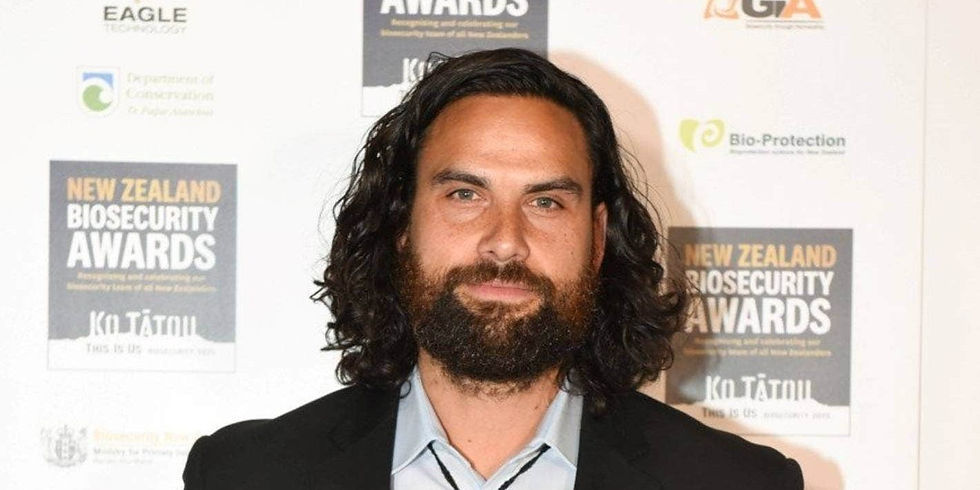
Tame Malcolm
Tame has more than a decade of experience in environmental management roles in the Bay of Plenty, Waikato, Canterbury and Marlborough regions. This has included working for OSPRI (TB Free), Waikato Regional Council, Department of Conservation (Waikato) and most recently the Maori Biosecurity Network.
His is a member of the Bay of Plenty Conservation Board, is on the Advisory Board for Biological Heritage National Science Challenge, he was interim executive of Te Tira Whakamataki (Maori Biosecurity Network), and is a member of the Royal Society.
Chey and Kahurangi Milne - Arataua Media

Chey and Kahurangi Milne established Arataua, which is a Rotorua based media, communications and marketing company with a mission: "Kia whakatairanga i te ahurea Māori ki te ao!" the promotion of Maori culture to the world. They come from family with haka pedigree and through their business have been bringing haka and Maori culture to a new generation and bigger audiences through modern media channels.
Arataua comes from the name of a Street in Ōhinemutu, Rotorua where Kahurangi was born and raised. Their uniqueness comes from their passion for te reo Māori, and Māori language and culture. Whānau is what they love and what they do.
Having worked in the television, media and marketing industries they decided to create their own ‘one stop shop’ business and service for clients and organisations needing support in content creation for online and television. Their marketing and communication services support clients to get content out there to be seen, heard and felt!
Te Mana o te Taiao
Our noho started on Tuesday April 6 at Te Whakaraupuka by setting our hīnaki. This was the first time for many to experience this mahi. At Te Whakaraupuka we use canoes to go out on one of the ponds to set hīnaki all around the pond. Following this we headed out to Ōtākou Marae for a pōwhiri and whakawhanaungatanga. We outlined the programme for the next few days and Tame and Puke started the wānanga with our rangatahi that night looking at what knowledge our rangtahi already knew about traditional Māori knowledge of the taiao.
Te Whakaraupuka

The following day, we had an early breakfast and headed out to Te Whakaraupuka to retrieve our hīnaki and look at the catch. This is the end of the tuna season as the last of the migrating eels have left our shores and those left behind prepare for winter and a time of low energy. As expected the catch wasn't huge but the range of sizes and species still gave us a lot of coverage.
Puke shared his experiences with us of eeling in the Urewera Ranges. He talked to us about different methods for fishing for eels in the riverbank. Instead of getting in the water the eels live under the side of the riverbank, so you would be able to dig the eel out without going in the water. It was important that you left some hāwareware, some eel slime, in the hole to let other eels know that that spot was now vacant and they could move in. He talked about the way eels bark and how they can grow to the diameter of a 10l bucket and as long as a horse.

Once we had completed the eel monitoring we headed to the nursery. Here Puke, Tame and Tūmai told us about the native plants and their uses. How tārata was used to swipe right for someone's choice of partner and how tōtara bark was used to swipe left. We looked at glyceria, one of the invasive species of reeds and some of the measures being used to shade out plant species like this.
Āria talked to the rangatahi about the importance of the wetlands globally and their importance in general for the health of the environment. Then Tūmai and Āria facilitated a session where the rangatahi learnt to release the weeds and grass that grow around the base of young native plants in these environments as well as a session on planting native trees.
Following this Tame led a session supported by Puke on pests, pest control and pest eradication. He talked about current methods, traditional methods, and whether or not these methods are making any difference to the damage these pests are causing.
We left Te Whakaraupuka to arrive back at Ōtākou for dinner and a debrief on the day’s activities.
The Symposium Day One
Another early start for us as we headed down to the Glenroy Auditorium for the start of the Symposium. Some of our rangatahi had to fulfill tangata whenua responsibilities at the pōwhiri and opening of the conference.
After the key-note speech from the Prime Minister we headed to the Orokonui Eco-Sanctuary. Here Tūmai talked to us again about some to the important native flora. We were able to sit and watch kōkō and kākā fight, feed and fly and talk about what a world would look like if we still had mega flocks of these birds in the tens of thousands and why we don't have flocks of that number now.

Following our trip to Orokonui we headed to the night market. The symposium organisers had organised a night market with stalls and free food for symposium participants. Tūmai and Kiringāua kicked off the entertainment, following them our rangatahi took to the stage and played some of their favourite songs. It was a great night and great way to celebrate whānau ora.
The Symposium Day Two
On the following day, Friday April 9, we started early and caught the Rangatahi keynotes at the symposium, Hora-Kairangi Nicholas who talked about the Ruia fund and Waimirirangi Ormsby who talked about her environmental kaupapa, Pipiri ki Papatūānuku.

After a quick morning tea we had our session with Chey and Kahurangi Milne from Arataua Media. They talked about being young Māori entrepreneurs, moving from working in the industry as presenters to backing themselves and creating their own media company. They talked about their successes to date, The Nu-Tube, Kia Ora Mama, Te Pāti Māori Election Campaign and some of their upcoming work with Māori digital content creators and Māori gaming.
It just so happened that the 2nd Student Climate Strike was on today, and we had been asked to talk from a Tangata Whenua perspective. The strikers marched through town and we met them in the Octagon. Tūmai spoke on our behalf and talked about the importance of indigenous knowledge in the climate change debate, he outlined many of the things that we had talked about during our time together, that colonialism and colonisation had separated us from our environment. He talked about the generations of knowledge about how to live with the environment had been lost because of that and how it was important that now we look to re-establish a symbiotic relationship with the environment, understanding fully that we rely on the environment for our ongoing survival. We stamped an exclamation mark on Tūmai's kōrero with a haka.
Following lunch we caught the inspirational Casketeers, Francis and Kaiora Tipene, then headed back to the marae to change for the gala dinner that night.
The gala dinner was variety show held at the Dunedin Town Hall featuring a Fashion Show of local Māori designers, a contemporary dance and He Waka Kōtuia kapa haka. We had a number of rangatahi who were involved in the Fashion Show as models, as well as performing for He Waka Kōtuia and others who were working at the Town Hall as well.
He Waka Kōtuia had two responsibilities tonight, firstly, one of the fashion designers asked us to be the musical accompaniment for his fashion show. We lined the back of the town hall stage and sung 'Mori' a song written in remembrance of Aunt Mori Pickering (nee Ellison), an influential taua from Ōtākou who was also a soprano singer in the Methodist Choir who toured Europe between World Wars One and Two. The song was the perfect accompanying waiata, as the last notes of the song rang out the models took their final poses as if we had rehearsed it.
Having already had a couple of short Alert Level Lockdowns in the beginning of the year, our performance group was feeling a little under-prepared for this performance. We invited a few of our tuakana to assist and it was great to have their support. Even with the few practices we had, we put on a strong performance and felt a real connection with the crowd.
To close off the night a funk band from Southland tore up the stage with classic R&B, Soul and Funk songs. We had a to drag our rangatahi off the dance floor to head back to the marae.
The Symposium Day Three
We had another early start on this, the final day of our programme and the symposium. After breakfast and clean up, we spent a little bit of time preparing for our presentation to the symposium later in the morning.
We arrived at the Glenroy Auditorium to support Georgia Latu from Pōtiki Poi.
After morning tea each of our rangatahi participants introduced themselves and talked briefly about their interest in the taiao. During the four days that we were together, Nick Matthews from Māui Studios recorded our time together, interviewed some of our rangatahi and put together a video presentation to complete our rangatahi presentation to the symposium.
There was one more presentation following ours and then the symposium closing address was delivered by Sir Mark Solomon, the chair of Te Pūtahitanga.
We had our final round up with our rangatahi before we finished our kaupapa. Our local rangatahi were collected by their families from the Glenroy, and those from Christchurch were taken to the airport.
In our evaluations the rangatahi unanimously rated the programme as beneficial, if we were to run another one, they would wholeheartedly attend. We asked what areas of the taiao that they would like to have further wānanga about, rivers rated highly, followed by native forests, then the moana and maunga.
Te Nohoaka o Tukiauau and the eel monitoring rated as a highlight and there no areas of the programme in which rangatahi considered a lowlight. Rangatahi reported that activities like pūrākau, eeling, learning correct names of native plants and animals, as well as the origins of some of the names helped them to better understand Māori connections to the environment.
We want to thank Julz Asher and the whānau at Ōtākou Marae, our kaiāwhina, Tāwini White, Shakayla Andrews, Tūmai Cassidy, Āria Rolleston, Kiliona Tāmati-Tupa'i, and Tia-Raumati Kohinga.


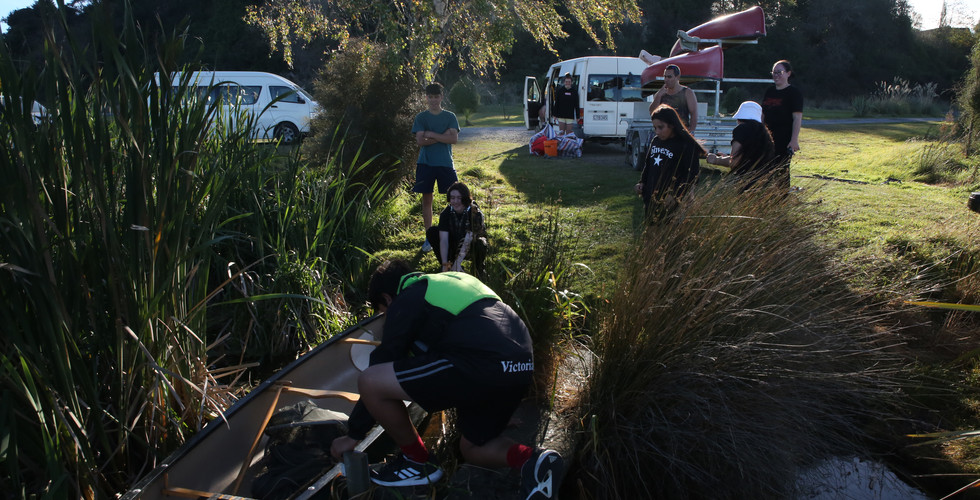

















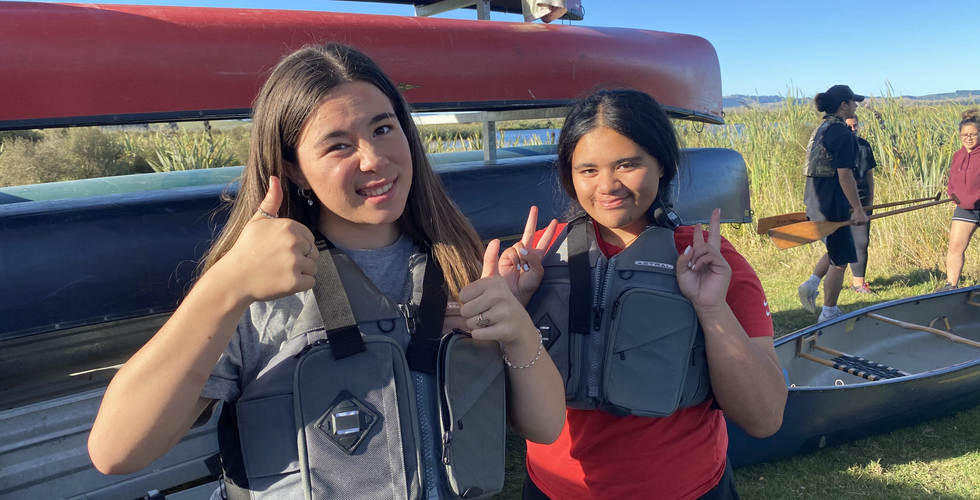





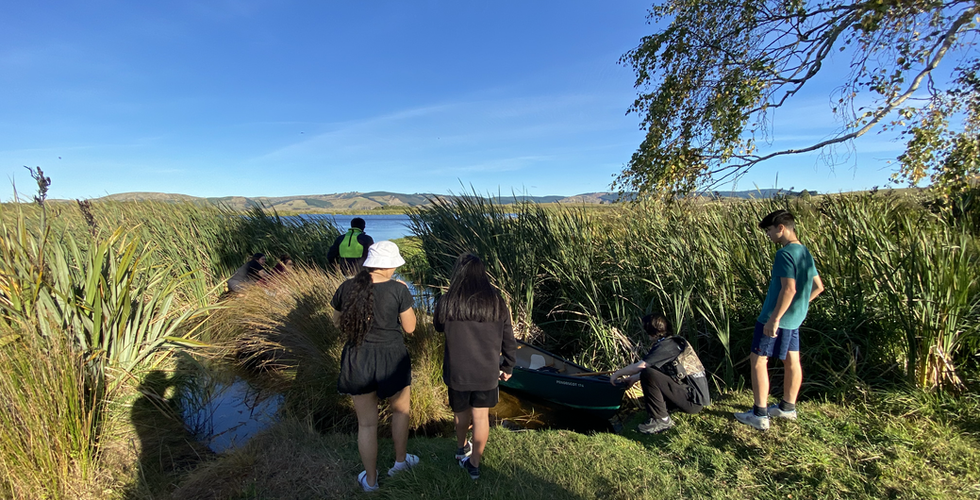



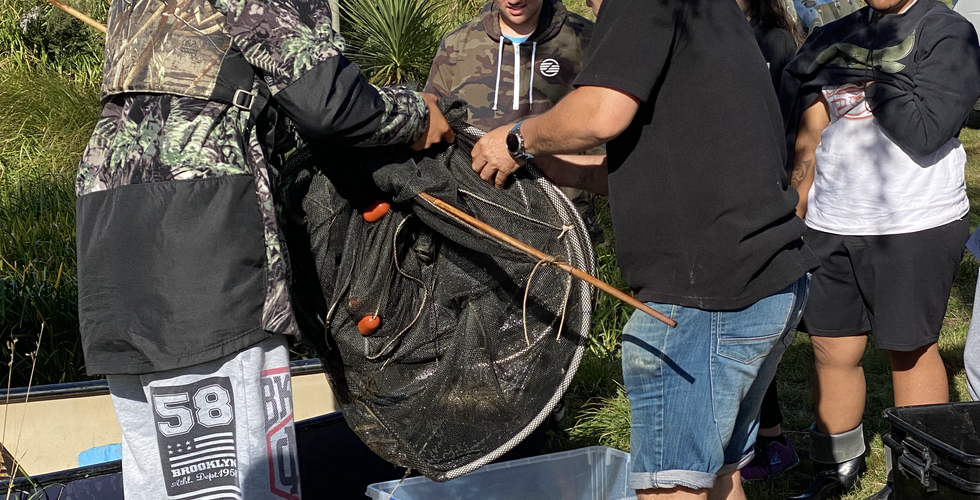






















Comments